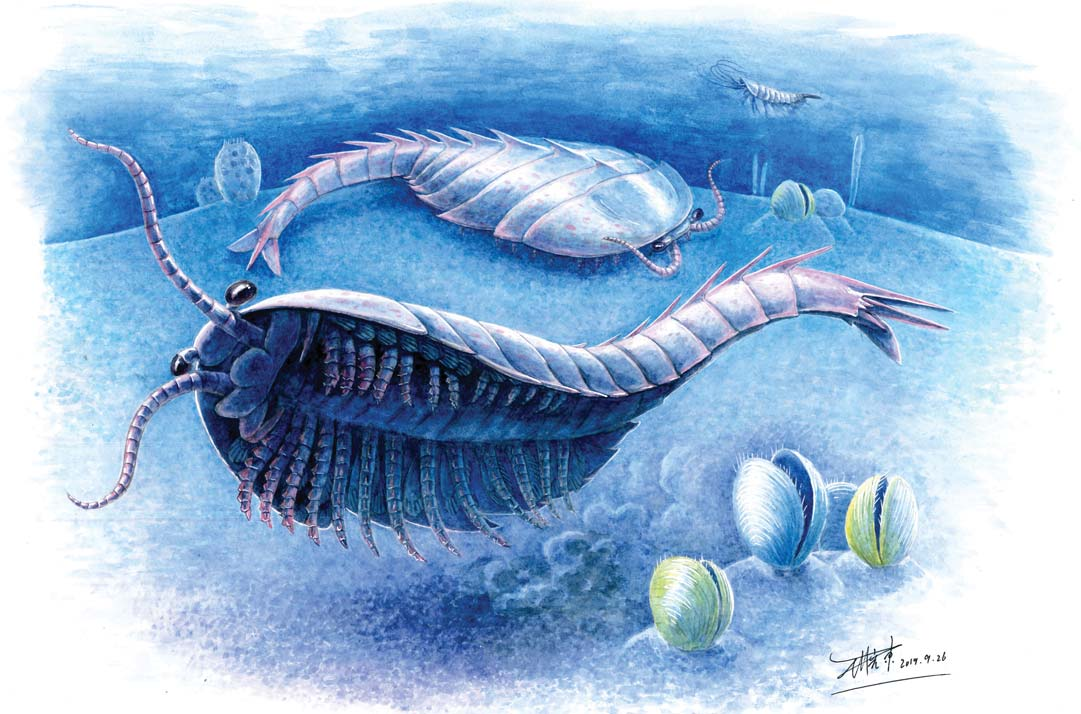Guangweicaris on:
[Wikipedia]
[Google]
[Amazon]

 ''Guangweicaris'' is an extinct genus of
''Guangweicaris'' is an extinct genus of

 ''Guangweicaris'' is an extinct genus of
''Guangweicaris'' is an extinct genus of fuxianhuiid
Fuxianhuiida is an extinct clade of arthropods from the Cambrian of China. All currently known species are from Cambrian Series 2 aged deposits in Yunnan Province, including the Chengjiang biota. They are generally considered to be close to the ...
arthropod
Arthropods (, (gen. ποδός)) are invertebrate animals with an exoskeleton, a Segmentation (biology), segmented body, and paired jointed appendages. Arthropods form the phylum Arthropoda. They are distinguished by their jointed limbs and Arth ...
known from the Cambrian
The Cambrian Period ( ; sometimes symbolized C with bar, Ꞓ) was the first geological period of the Paleozoic Era, and of the Phanerozoic Eon. The Cambrian lasted 53.4 million years from the end of the preceding Ediacaran Period 538.8 million ...
period. It is only known from the type species ''Guangweicaris spinatus'', which is known from the Cambrian Stage 4
Cambrian Stage 4 is the still unnamed fourth stage of the Cambrian and the upper stage of Cambrian Series 2. It follows Cambrian Stage 3 and lies below the Wuliuan. The lower boundary has not been formally defined by the International Commission on ...
Guanshan Biota near Kunming
Kunming (; ), also known as Yunnan-Fu, is the capital and largest city of Yunnan province, China. It is the political, economic, communications and cultural centre of the province as well as the seat of the provincial government. The headquar ...
. It is currently the latest known fuxianhuiid. It was first described in 2007, and was given a comprehensive re-description in 2020. It is currently known from over 150 specimens. Within the fuxianhuiids it is sister to ''Fuxianhuia
''Fuxianhuia'' is a genus of Lower Cambrian fossil arthropod known from the Chengjiang fauna in China. Its purportedly primitive features have led to its playing a pivotal role in discussions about the euarthropod stem group. Nevertheless, despit ...
'', together forming the clade Fuxianhuiidae. In comparison to ''Fuxianhuia'' it has a wide, oval shaped opisthothorax and a proportionally longer, narrow tail-like abdomen, with 3 prothoracic tergites
A ''tergum'' (Latin for "the back"; plural ''terga'', associated adjective tergal) is the dorsal ('upper') portion of an arthropod segment other than the head. The anterior edge is called the 'base' and posterior edge is called the 'apex' or 'mar ...
, 5 opisthothoracic tergites and 7 abdominal tergites, it also possesses a row of spines running down the central axis of the body from the second opisthothoracic tergite.
Phylogeny
FromReferences
{{Taxonbar, from=Q1303488 Cambrian animals of Asia Cambrian arthropods Cambrian genus extinctions